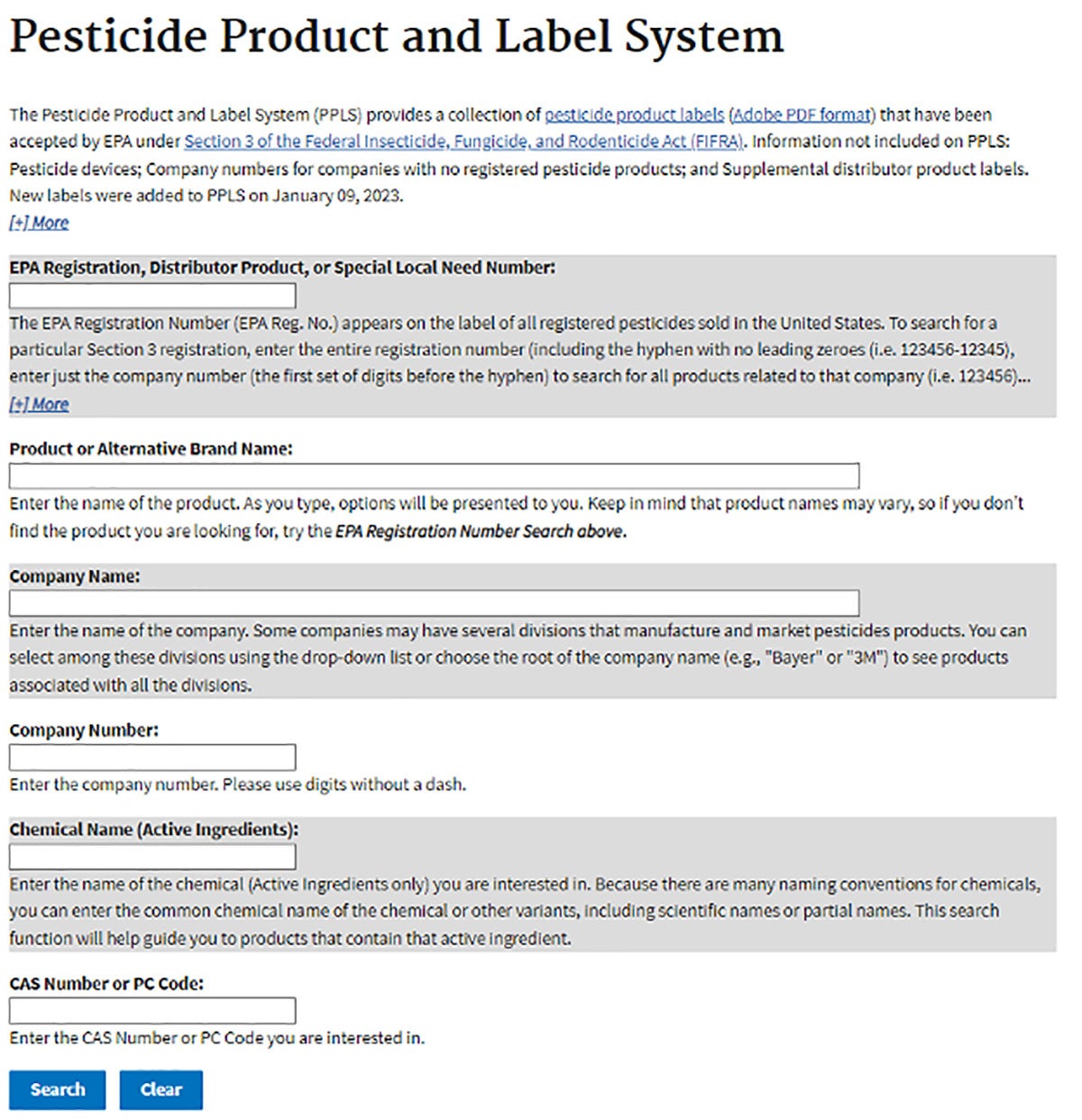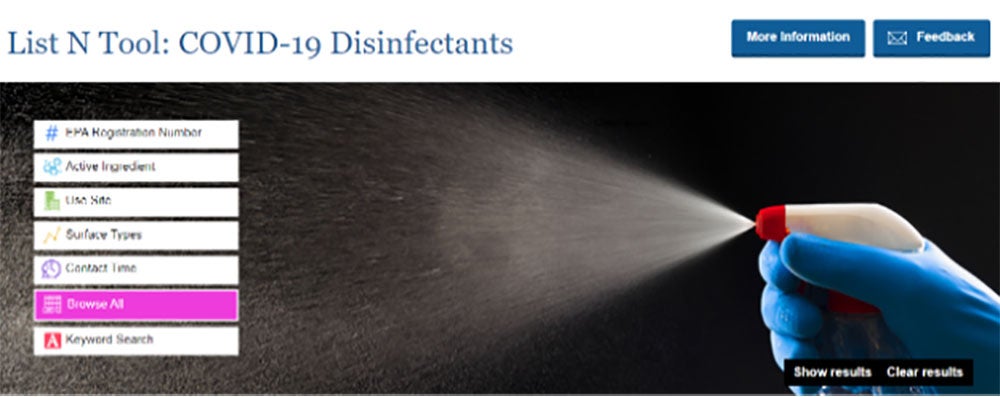Use EPA Lists for Product Guidance, Not the Last Word

EPA lists are designed to guide consumers towards products that are effective against specific pathogens
As you may know, the Environmental Protection Agency (EPA) reviews data submitted by manufacturers for pathogen claims and specific uses. All approved pathogen kill claims and directions for use can be found on EPA master labels, which can be searched on the EPA website (see image below for what this search looks like).

This website allows you to search specific products or chemical active ingredients. However, you cannot use it to search for a product that is effective against a specific pathogen. To do that, you would need to look at the master label for a specific product and see if it is able to kill the pathogen you need to target. This is fine if you already have a product in mind, but in many cases, you may not know what product is effective against a specific pathogen or what product you want to use. To help guide consumers who are concerned about specific pathogens or other product uses, EPA created a number of lists.
Most people became aware of EPA lists during the COVID-19 pandemic, when List N was introduced to guide consumers towards products expected to be effective against SARS-CoV-2 (see image below).

In fact, the EPA has lists to guide effective product choices for the rest of the alphabet, all the way through List Q (except for the letter I).
All these lists are intended to help identify products that are effective for given use. Generally, EPA lists fall into three categories:
- Products registered with the EPA that have disinfection instructions against specific pathogens. Examples: List K for products with claims against Clostridium difficile. Or List G for products with claims against Norovirus. Products on these lists have been tested against these pathogens and have instructions for disinfection against them.
- Products registered with the EPA for specific types of uses. Example: List J for products registered for medical waste treatment. These products have been tested and have verified claims for these uses.
- Emerging viral pathogens lists. These are products that are either have demonstrated, or are expected to be effective against specific pathogens. These include List N for SARS-CoV-2 or List L for Ebola virus. Products on these lists may not have been tested against the pathogen but are expected to be effective because they have claims for harder-to-kill pathogens.
How do products get on one of the EPA’s lists?
These lists are updated periodically by the EPA — it is not an automatic process. This means that there may be products with claims against a pathogen that do not show up on the appropriate list. For the emerging viral pathogens lists (like List N for SARS-CoV-2), eventually, these pathogens may become available for testing by manufacturers. SARS-CoV-2 has been available for testing for over 2 years now, therefore, List N will have products that have been tested and proven against SARS-CoV-2, but it may also have products that have never been tested against the virus but are expected to be effective against it.
What is important to understand is that if the product has disinfection instructions on their master label against a pathogen, it can kill the pathogen, regardless of whether it can be found on the EPA list.
So, should I follow the EPA lists or look for claims on the master label?
That depends on whether you already have a product in mind or whether you are more concerned with a specific pathogen. In some cases, you may already have a specific product that you want to use, or your space may have equipment that can only be treated with specific products. In other cases, you may be concerned about a specific pathogen, as SARS-CoV-2 was a concern for many people, and you want to find which products to use.
Below is some guidance on where to start in either case, but understand that these lists are not intended to help you find an “ideal” disinfectant. They are simply another tool to help you evaluate your product choice!
If you already have a product you want to use and want to know if it kills a specific pathogen of concern:
- Check the product master label for kill claims against this pathogen. Kill claims on a master label have been reviewed and approved by the EPA.
- If your product does not have the kill claim, check the relevant EPA list to see if it is expected to be effective against that pathogen.
If you are concerned about a specific pathogen of concern, but do not know what product to use:
- Check the relevant EPA list to identify products expected to be effective OR
- Reach out to your distributor, product supplier, or product manufacturer and ask them to share which products they have that can kill the pathogen.
EPA lists cannot tell you where you want to go, but they can help you reach your destination!






